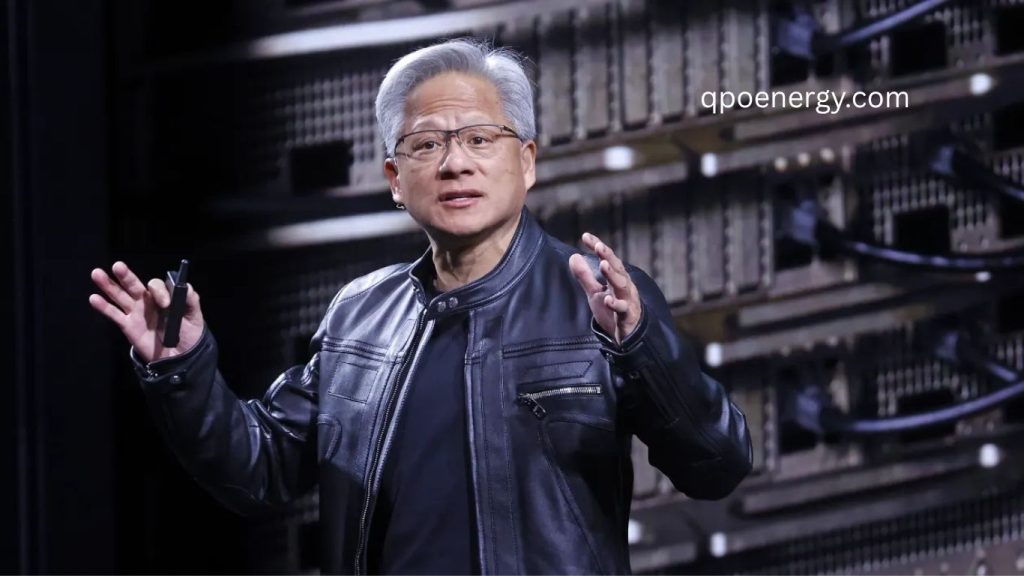Nvidia has reportedly committed more than $900 million in a landmark move: hiring Enfabrica’s CEO, Rochan Sankar, bringing in key team members, and licensing the startup’s advanced AI networking technology. The strategic play signals Nvidia’s intent to integrate next-generation interconnects into its AI infrastructure stack.
A Strategic Talent + IP Acquisition—Not a Traditional Buyout
Unlike a typical acquisition, Nvidia structured the deal as a blend of cash, stock, and licensing, a model often called an “acqui-hire.” The agreement closed last week, and Sankar has now officially joined Nvidia, according to sources familiar with the transaction.
This approach mirrors recent AI talent deals made by Meta and Google, where high-value startups were absorbed through personnel hires plus IP licensing rather than full-blown acquisitions.
In Nvidia’s case, the move enables rapid integration without the regulatory and operational baggage that often comes with larger mergers.
Why Enfabrica Matters—Networking at Massive Scale
Founded in 2019 by engineers from Broadcom and Alphabet, Enfabrica focuses on solving one of AI’s biggest challenges: connecting GPUs at scale. Its hardware and software are designed to link more than 100,000 GPUs into a coherent cluster while reducing latency, congestion, and performance loss.
One of Enfabrica’s marquee innovations is ACF-S (Accelerated Compute Fabric Switch), a multi-path interconnect architecture that promises resilience, high throughput, and low latency even under heavy workloads.
Another offering, EMFASYS (Elastic Memory Fabric System), enables AI servers to tap into pooled memory over standard network links, helping reduce dependence on expensive high-bandwidth memory (HBM).
By embedding Enfabrica’s capabilities, Nvidia could turn clusters of GPUs into unified supercomputers—making their next-generation systems more efficient, scalable, and attractive to hyperscalers and cloud providers.
How This Fits Into Nvidia’s Broader AI Strategy
Nvidia has already played a pivotal role in the AI boom, supplying GPUs that power large language models and other generative AI systems. These GPUs are often deployed in clusters to handle massive compute and data throughput.
Recent Nvidia hardware has shifted from standalone chips to rack-scale systems—some with 72 GPUs per rack, tightly interconnected.
With Enfabrica’s technologies, those racks could communicate much more efficiently, helping Nvidia sell integrated, turnkey AI infrastructure rather than just chips.
This deal marks a shift: Nvidia is positioning itself not merely as a chip vendor but as a provider of unified AI compute platforms—blurring lines between hardware, networking, and system design.
Financial Backdrop & Previous Investments
Nvidia already had a financial stake in Enfabrica. In 2023, it participated in a $125 million Series B round led by Atreides Management.
Subsequently, Enfabrica raised $115 million from investors such as Spark Capital, Arm, Samsung, and Cisco, bringing its valuation to approximately $600 million.
With this new deal, Nvidia is deepening its involvement—not just as an investor, but now as a principal integrator of Enfabrica’s IP and talent.
Comparisons to AI Talent Deals at Meta, Google & Others
New AI talent deals have become a trend across the industry. In June 2025, Meta struck a $14.3 billion deal to onboard Scale AI founder Alexandr Wang and acquire a 49% stake in the startup.
Around the same time, Google pursued a $2.4 billion agreement to acquire R&D talent and license technology from the coding AI startup Windsurf.
Microsoft, Amazon, and others have followed suit—with deals involving Inflection and Adept among them—emphasizing hiring teams and tech rather than acquiring full companies.
These transactions help companies sidestep regulatory scrutiny, simplify integration, and hone in on the capabilities that matter most—talent and IP.
Nvidia’s Past Big Bets & Recent Moves
Historically, Nvidia has not been a major acquirer. Its standout acquisition was Mellanox in 2019—a $6.9 billion deal that brought networking assets into its ecosystem.
The technologies from Mellanox support part of Nvidia’s current Blackwell and interconnect strategy.
Nvidia also attempted to acquire Arm in 2022, but that deal collapsed amid regulatory pushback.
More recently, Nvidia acquired Run:ai for ~$700 million to deliver AI infrastructure orchestration capabilities.
On the same day this Enfabrica news broke, Nvidia announced a $5 billion stake in Intel to co-develop AI processors, along with a roughly $700 million investment in U.K. data-center startup Nscale.
These moves underscore Nvidia’s ambition to orchestrate all layers of AI infrastructure—from chips to compute fabric to data centers.
Risks, Challenges & Regulatory Considerations
While the acqui-hire model offers advantages, it’s not immune to regulatory attention. The FTC has scrutinized deals like Microsoft–Inflection and Amazon–Adept, signaling that talent-plus-IP deals may not fully evade antitrust oversight.
Nvidia may need to defend this arrangement if regulators argue it suppresses competition in AI hardware or infrastructure.
Operationally, integrating a tightly knit team and their specialized IP into Nvidia’s existing workflows is nontrivial. Success will depend on retaining key engineers, aligning culture, and merging architectures.
Furthermore, competitors will watch closely and may pursue their own talent and technology acquisitions, escalating the arms race in AI compute infrastructure.
What This Means for the AI Ecosystem
- Faster Scaling of AI Models: With enhanced interconnects and memory fabrics, cloud providers and AI firms can train larger models faster and more cost-efficiently.
- End-to-End AI Platforms: Nvidia is positioning itself as a one-stop provider—not just for GPUs, but for the compute fabric that holds massive clusters together.
- Pressure on Startups: Emerging AI infrastructure firms may now face acquisition pressure or struggle to stay independent.
- Marketplace Consolidation: As these deals continue, a few large players may dominate not only hardware but also the network fabric and system integration layers.
Frequently Asked Questions:
What is the $900 million deal between Nvidia and Enfabrica about?
Nvidia has spent over $900 million to hire Enfabrica CEO Rochan Sankar and several key employees, while also licensing Enfabrica’s cutting-edge AI networking and memory technology. The move gives Nvidia access to systems that can connect more than 100,000 GPUs efficiently, enhancing its AI infrastructure capabilities.
Why did Nvidia choose to hire Enfabrica’s team instead of acquiring the entire company?
Nvidia structured this as a “talent and technology” deal—also known as an acqui-hire—to quickly integrate Enfabrica’s expertise and IP without facing lengthy regulatory reviews or the complexity of a full acquisition. This approach allows Nvidia to gain immediate technical advantages while avoiding potential antitrust challenges.
Who is Rochan Sankar, and what role will he play at Nvidia?
Rochan Sankar, co-founder and former CEO of Enfabrica, is a respected engineer and innovator in AI networking. After joining Nvidia, he is expected to lead or contribute to next-generation GPU interconnect and data-center infrastructure projects, helping strengthen Nvidia’s leadership in AI hardware.
What makes Enfabrica’s technology so valuable to Nvidia?
Enfabrica’s breakthrough lies in its high-speed interconnect architecture that enables tens of thousands of GPUs to work seamlessly as a single supercomputer. Its ACF-S (Accelerated Compute Fabric Switch) and EMFASYS (Elastic Memory Fabric System) drastically improve data throughput, reduce latency, and optimize resource sharing in large-scale AI clusters.
How does this deal benefit Nvidia’s existing AI ecosystem?
By integrating Enfabrica’s technology, Nvidia can create more unified and efficient AI systems—where thousands of GPUs communicate as one. This improves training speed for large language models, enhances power efficiency, and helps major cloud providers deploy AI workloads faster and cheaper.
How does this deal compare to AI talent acquisitions by other tech giants?
Nvidia’s move is similar to Meta’s $14.3 billion deal with Scale AI, Google’s $2.4 billion deal with Windsurf, and Microsoft’s partnership with Inflection AI. All these transactions focus on securing top AI talent and proprietary technology instead of acquiring entire companies.
Was Nvidia previously involved with Enfabrica before this deal?
Yes. Nvidia had already invested in Enfabrica during its $125 million Series B funding round in 2023. That early connection likely helped Nvidia assess Enfabrica’s potential and paved the way for this larger partnership and talent acquisition.
Conclusion
Nvidia’s bold $900 million move to bring Enfabrica’s CEO and technology into its ecosystem marks a defining moment in the evolution of AI infrastructure. This strategic decision goes far beyond a traditional acquisition — it’s a calculated step toward reshaping how massive GPU clusters communicate, scale, and perform. By integrating Enfabrica’s breakthrough networking and memory technologies, Nvidia is building the foundation for a new era of unified, high-speed AI computing.


